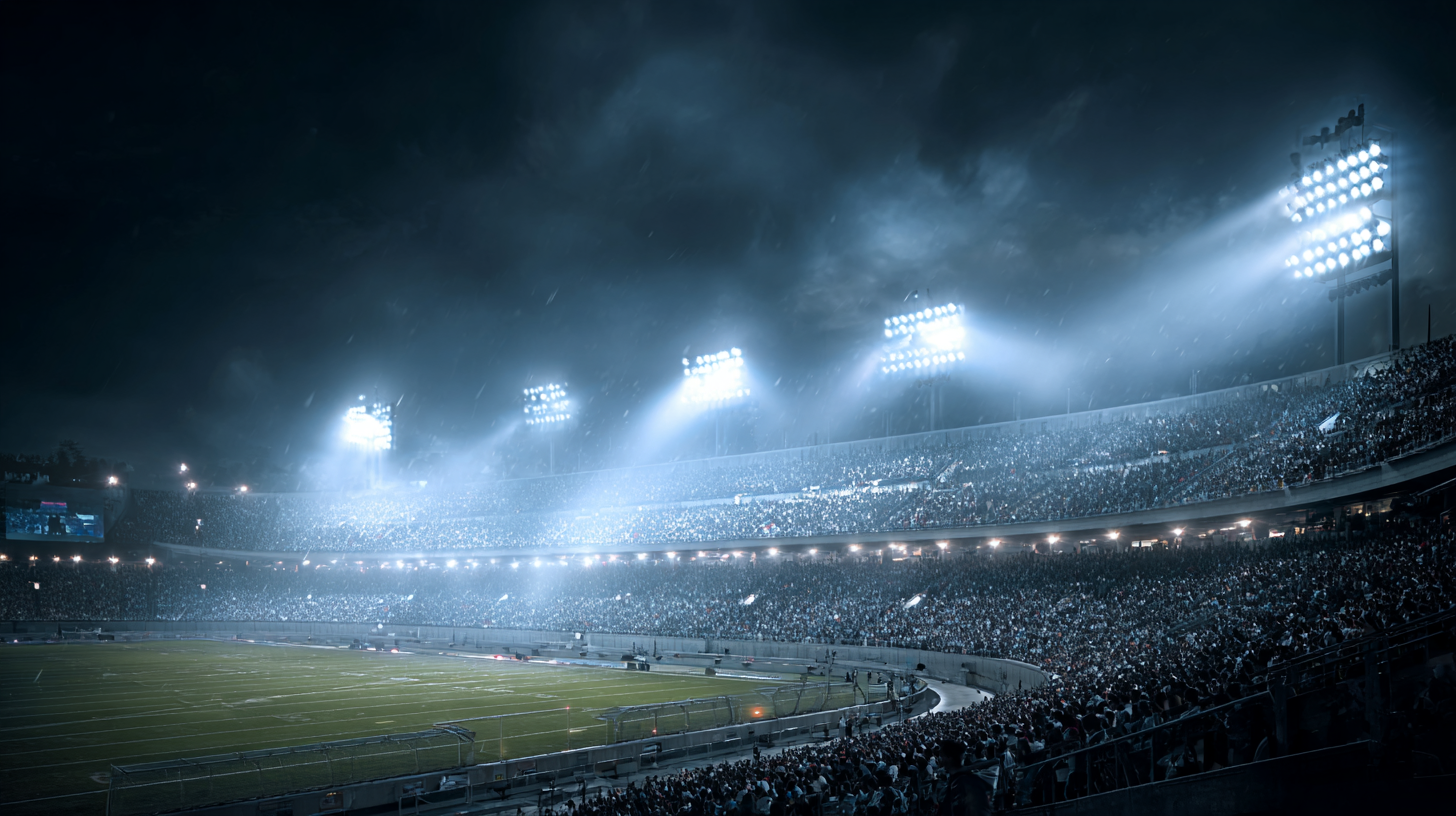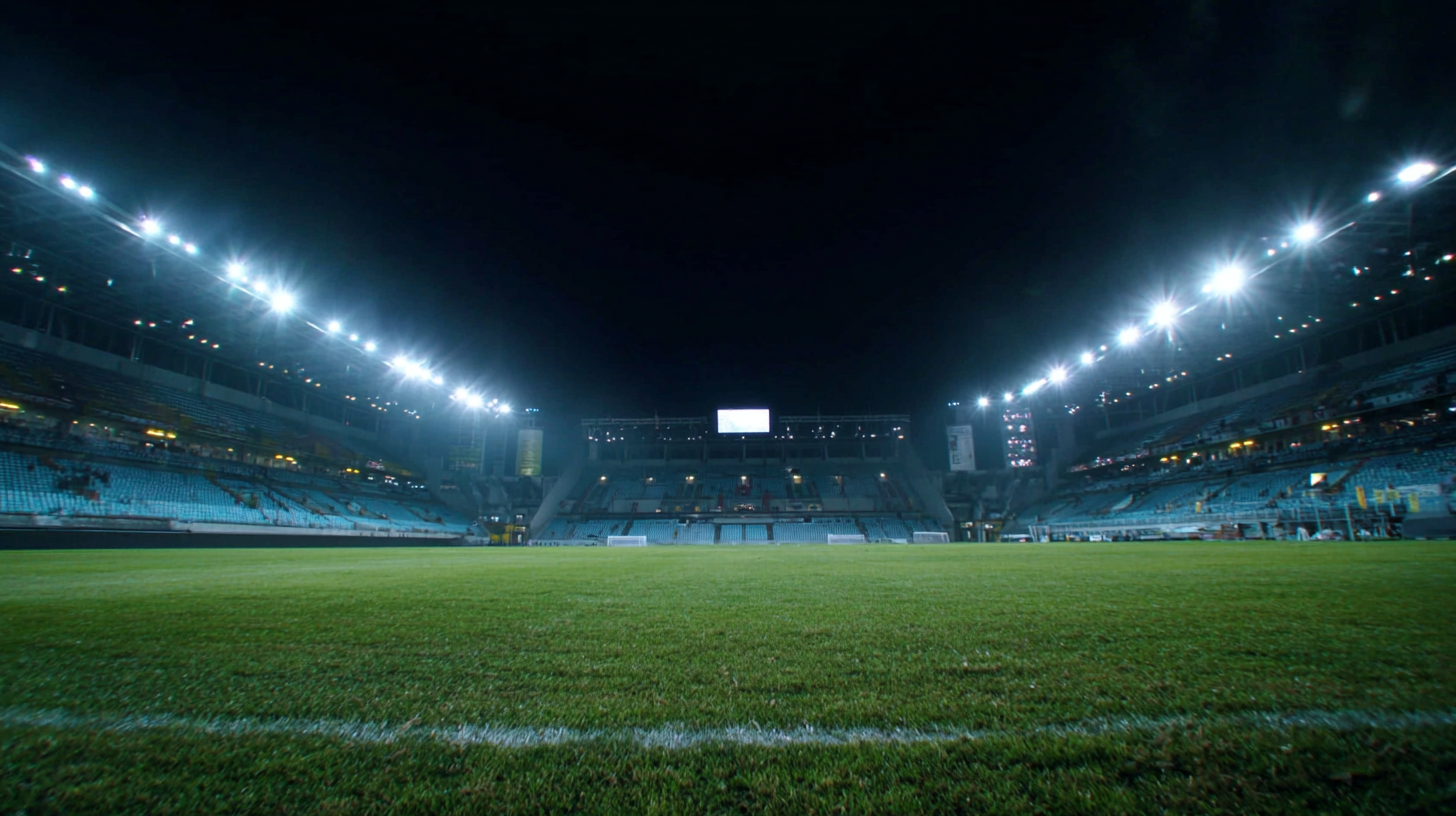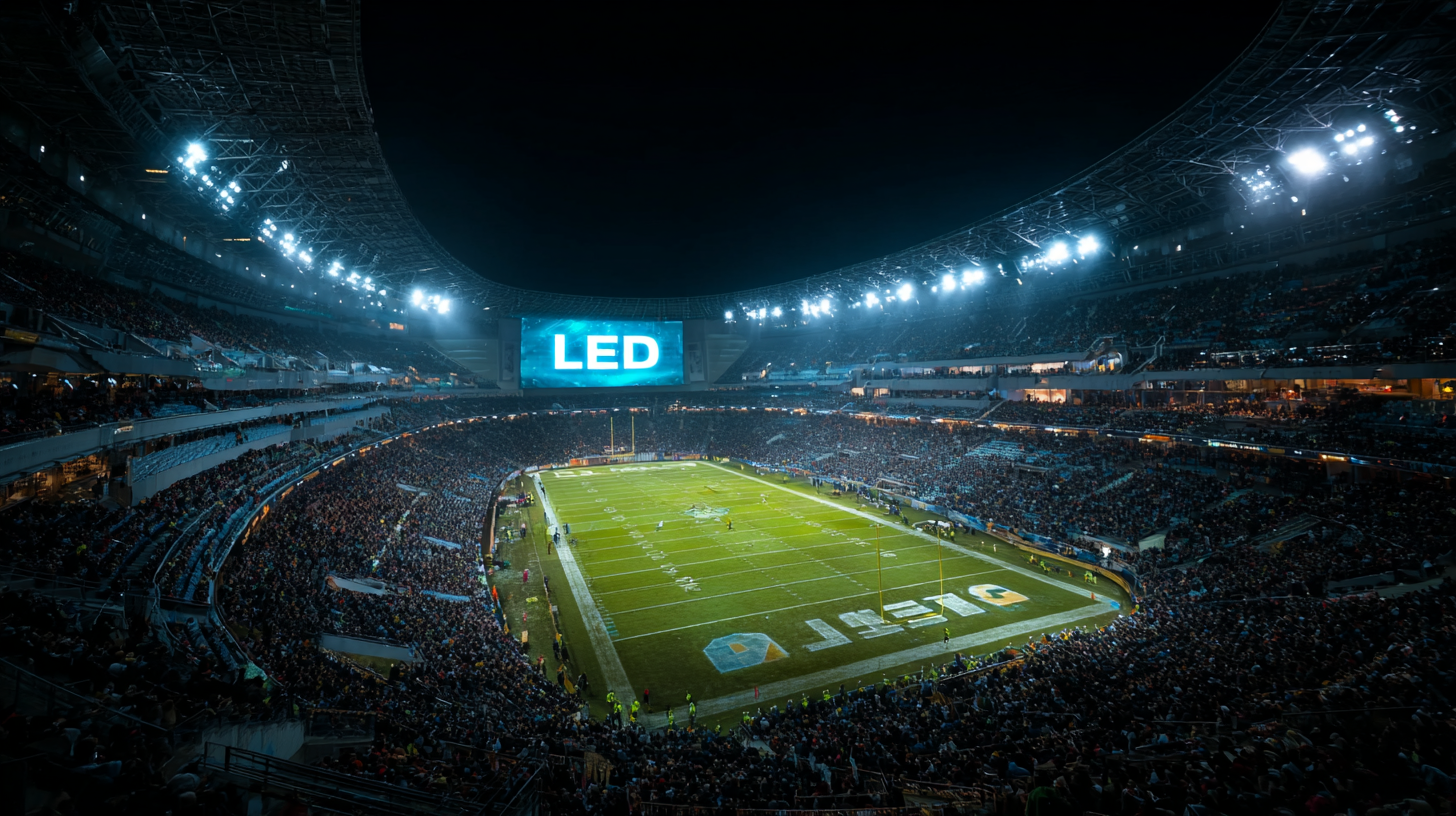How to Choose the Best LED Stadium Light for Your Sporting Event
In today’s sports industry, the choice of lighting is crucial for enhancing the spectator experience and ensuring safety during events. LED stadium lights have emerged as a preferred solution, not only for their superior brightness and energy efficiency but also for their longevity and cost-effectiveness.

According to a report by the U.S. Department of Energy, LED lighting can use up to 75% less energy than traditional incandescent lighting while providing a much longer lifespan—up to 25 times longer. This transition to LED technology is not merely a trend; it’s a necessity for stadiums aiming to meet modern standards and sustainability goals.
Furthermore, the global LED stadium lighting market is projected to grow significantly, driven by the increasing demand for high-quality illumination in sports facilities. As event organizers seek to enhance visibility and aesthetic appeal, understanding how to choose the best LED stadium light is paramount to successfully hosting memorable sporting events.
Understanding Industry Standards for LED Stadium Lights
When selecting LED stadium lights for your sporting event, understanding industry standards is crucial to ensure optimal performance and safety. Key factors include brightness, energy efficiency, and durability. Look for lights that meet the Illuminating Engineering Society (IES) guidelines, which set recommendations for illuminance levels based on the type of sport being played. Proper light uniformity is also important to avoid shadows and provide clear visibility for both players and spectators.
**Tips:** Always check the lumen output of the LED lights, which indicates how much light is produced. For example, a minimum of 100 lux is often required for recreational sports, while professional events may need more than 200 lux. Additionally, consider the color temperature; lights that fall between 4000K and 6000K provide a natural daylight effect and enhance the viewing experience.
Lastly, evaluate the light's construction and resistance to environmental conditions. High-quality LED stadium lights should have an IP65 rating or higher, ensuring they are dust-tight and can withstand water jets. This durability ensures the lights will perform consistently regardless of weather conditions, helping to avoid disruptions during your event.
LED Stadium Light Brightness Comparison
Key Features to Consider When Choosing LED Stadium Lighting
When selecting the best LED stadium light for your sporting event, several key features should guide your decision. First and foremost, the brightness level, measured in lumens, is critical. For instance, according to a report by the International Association of Venue Managers (IAVM), optimal lighting for professional sports should exceed 100 foot-candles to ensure high-quality visibility for both players and spectators. This requirement emphasizes the importance of choosing fixtures that provide adequate lumens while maintaining energy efficiency, ideally within a range of 100,000 to 200,000 lumens for larger venues.
Another vital aspect to consider is the color temperature of the LED lights. The ideal range is between 4000K and 6500K, as specified in the Illuminating Engineering Society's standards, which offer a balance between daylight-like conditions and warmth without causing distraction. Additionally, examine the durability and IP rating of the fixtures, especially if your stadium is exposed to various weather conditions. Research indicates that investing in LEDs with a high IP rating (at least IP65) can protect them from dust and water, ensuring longevity and reducing maintenance costs. By focusing on these features, you can make a well-informed choice that enhances your sporting event’s atmosphere and overall experience.
Comparing Different LED Stadium Light Brands and Models
When selecting the best LED stadium lights for sporting events, it's essential to compare different brands and models to ensure optimal performance and efficiency. According to a report by the U.S. Department of Energy, LED lighting can provide a 50% reduction in energy consumption compared to traditional lighting solutions. This significant energy savings not only lowers operational costs but also contributes to sustainability goals that many sporting venues are now prioritizing.

Different brands offer various features that can impact your decision. For instance, Philips provides innovative designs with their ColorReach series, boasting a color temperature range of up to 6500K, which significantly enhances visibility during night games. On the other hand, GE's Evolve LED fixtures are known for their exceptional lumen output, with some models delivering more than 30,000 lumens, ensuring that every corner of the field is illuminated. According to a survey by the International Association of Venue Managers, stadiums equipped with high-performance LED lights reported a 20% increase in game attendance due to improved visibility and ambiance. This data underscores the importance of selecting the right product that aligns with both your technical requirements and audience experience.
Evaluating Brightness and Energy Efficiency for Sporting Events
When selecting LED stadium lights for sporting events, evaluating brightness and energy efficiency emerges as crucial factors. The Illuminating Engineering Society (IES) recommends a minimum brightness of 100-foot candles for high-level sports like soccer and football. For optimal visibility, venues must consider that brighter lighting not only enhances player performance but also improves the spectator experience. Research indicates that LED lighting can deliver the required brightness with significantly lower energy consumption compared to traditional halogen lights. Specifically, LEDs use up to 75% less energy while providing higher lumen output, making them the ideal choice for large stadiums.
Energy efficiency does not just translate to cost savings; it also contributes to sustainability. According to a recent report by the U.S. Department of Energy, switching to LED lighting in sports facilities can reduce greenhouse gas emissions by around 50% over a typical life span of the lighting system. Furthermore, LEDs last longer, averaging 50,000 hours of use compared to the 1,000 hours of conventional bulbs. This longevity minimizes the frequency of replacements and maintenance, resulting in further savings and reduced operational disruptions during sporting events. By prioritizing high brightness combined with energy efficiency, venues can enhance their lighting strategy while promoting environmental responsibility.
Installation and Maintenance Tips for Long-lasting Performance
 When selecting LED stadium lights for your sporting event, proper installation and maintenance are crucial for ensuring long-lasting performance. Begin by assessing the specific lighting requirements of your venue. Make sure to install fixtures at the appropriate height and angle to maximize coverage and eliminate dark spots. Adequate attention should be given to wiring and connections—using weather-resistant materials can prevent issues caused by moisture and extreme temperatures. Furthermore, ensure that your fixtures are securely mounted to withstand wind and other environmental factors, safeguarding against unexpected outages during crucial moments.
When selecting LED stadium lights for your sporting event, proper installation and maintenance are crucial for ensuring long-lasting performance. Begin by assessing the specific lighting requirements of your venue. Make sure to install fixtures at the appropriate height and angle to maximize coverage and eliminate dark spots. Adequate attention should be given to wiring and connections—using weather-resistant materials can prevent issues caused by moisture and extreme temperatures. Furthermore, ensure that your fixtures are securely mounted to withstand wind and other environmental factors, safeguarding against unexpected outages during crucial moments.
Regular maintenance is equally important to keep your LED stadium lights functioning optimally. Conduct routine inspections to check for any signs of wear and tear, such as damaged lenses or loose connections. Cleaning the lights periodically is vital to remove dust and debris that can diminish their brightness and affect visibility. Additionally, develop a schedule for replacing any components or fixtures as needed, based on the manufacturer's recommendations. Being proactive in maintenance not only extends the life of the lighting system but also enhances the overall experience for athletes and spectators during the event.
